Craquelure on furniture: vintage and originality of the interior
The technique of "crackle" ("craquelure") involves the artificial aging of varnished or painted surfaces of various pieces of furniture and interior attributes (paintings, caskets, vases and other accessories).
The name of the artificial aging technology comes from the French word "craquelure" - a crack. Despite the fact that this technology originally appeared as a means of restoring antique furniture, today it is widely used in the production of new products to give them some flair of antiquity.
Cracking technology for wooden surfaces
Modern industry produces many compositions for applying craquelure at home with your own hands. Moreover, some of them can be used not only for processing wood, but also for applying “antique” cracks to the surface of products made of plastic or metal. Decorative metal additions to wooden furniture, on which patina or complemented with craquelure, will look quite stylish and original.
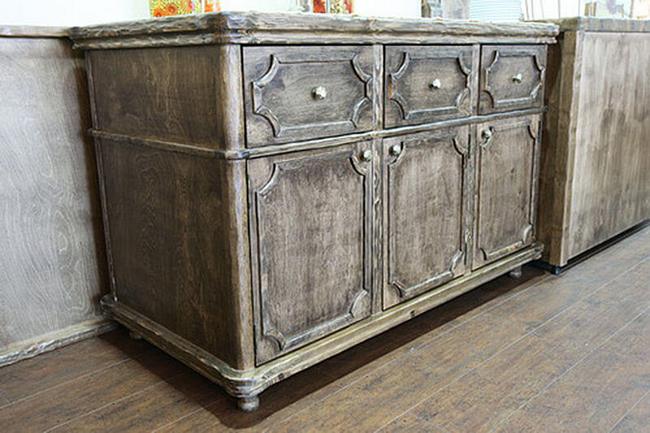
To apply craquelure cracks, you can buy a one-component crackle varnish or a two-component composition, a set of which is sold in the form of two bottles. a one-component varnish is quite suitable.
Many experienced restorers believe that a more natural, antique look, furniture items are obtained if cracks are formed using improvised means - vinegar essence, egg white, gelatin, and even washing gel. However, for those who want to try their hand at restoration work for the first time, it is better to use a special crackle varnish sold in household goods stores under the brands Stamperia and Ferrario (Italy) or Havo (Netherlands) called "Creall-Crackle" or Antique Crackle.

Crackle technique for beginner restorers
For home craftsmen who feel sorry for throwing out outdated but familiar furniture and those who want to update it, we can offer the Provence-style restoration technique. To carry out restoration work, it is necessary to purchase two types of acrylic paint in contrasting shades and a one-component lacquer "Crackle Country Style", intended for use with acrylic dyes.
Before starting the restoration, the old paint and varnish coating is removed from the furniture surface, after which the wooden surface is primed with acrylic paint (preferably in metallic color). After complete drying of the metallized paint base, the surface of the restored product is covered with craquelure varnish.
It should be borne in mind that the width of the cracks depends on the thickness of the varnish layer. The thicker the varnish layer, the wider the lines of the crackle grid will be.
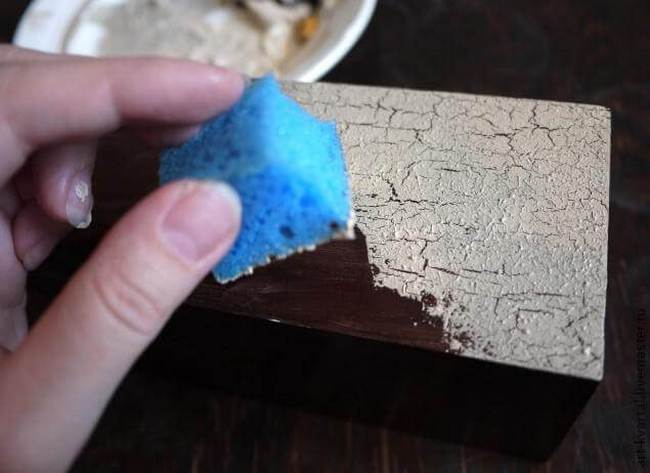
After the varnish has completely dried, a second coloring layer is applied to it, for which a matte paint is chosen - glossy or metallized paint is not suitable for the second coloring, since it will not react with the varnish layer and the crackle network will not spontaneously form.
Until the paint has hardened, its surface is worked with a brush with synthetic bristles, due to which a network of cracks is formed. If cracks began to form during the reaction of matte paint with dried crackle varnish, then brushing can be omitted, since lack of experience can lead to sloppy decoration.
On a note!
After the paint has dried, the surface of the furniture can be decoupled or simply covered with a layer of protective, transparent varnish.
Beginning restorers can be recommended to purchase kits for home art "Crackle" (manufacturer "Aqua-Color") or "Creative" (TINTA Viva), which include one-step krakenlure and protective varnish, brushes and several bottles of acrylic paint in various colors.
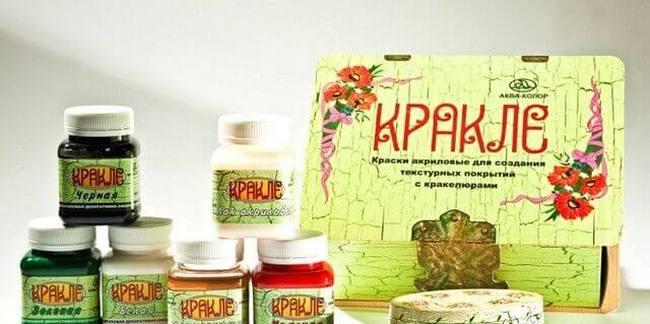
The use of two-component formulations
A better craquelure mesh can be obtained using a two-component varnish "Crackle Sottile" (brand "Stamperia"). When restoring wooden furniture products, after cleaning the surface of the old paint and varnish coating and grinding, a varnish is applied to it with a brush with synthetic bristles, designated as “Step 1”.
After the lacquer layer has dried for 30.0…40.0 minutes, the second component is applied to it - “Step 2”. The decorativeness of the resulting mesh depends on the thickness of the second layer. To speed up the drying process of the second varnish coating, many "homemade" use a hair dryer, and with a large area - a construction hair dryer.
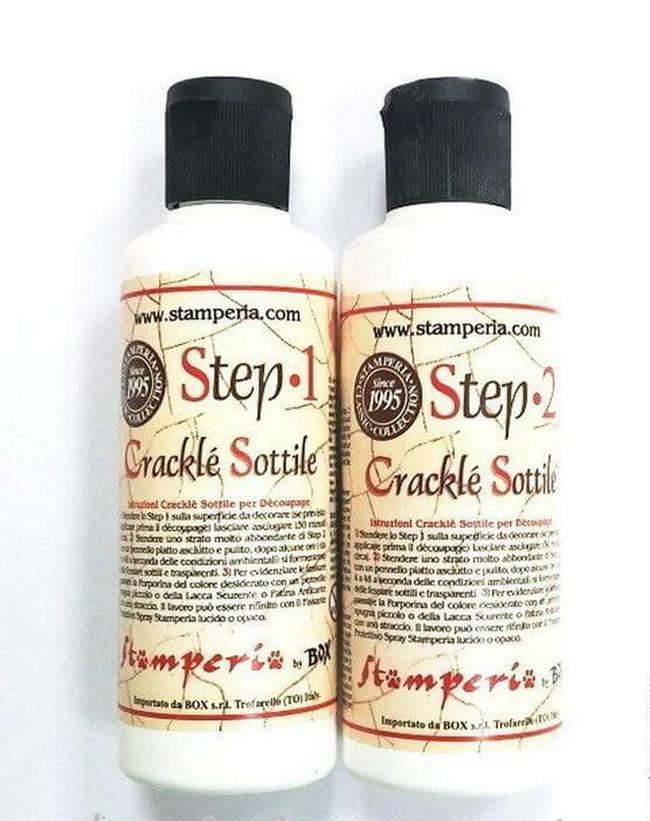
In order to make cracks more visible, they are subjected to additional decoration, for which bronze powder or aluminum silver powder is rubbed into the cracks. It is better to use a special metallized powder for craquelure "Porporina" from "Stamperia". You can use regular oil paint or bituminous varnish.
On a note!
After grouting, paint residues and excess powdery material are removed from the surface of the product, for which ordinary sunflower oil can be used.
At the final stage, a well-wiped surface is opened with a finishing varnish-fixer "Darkening Lacquer" or a water-based acrylic varnish.
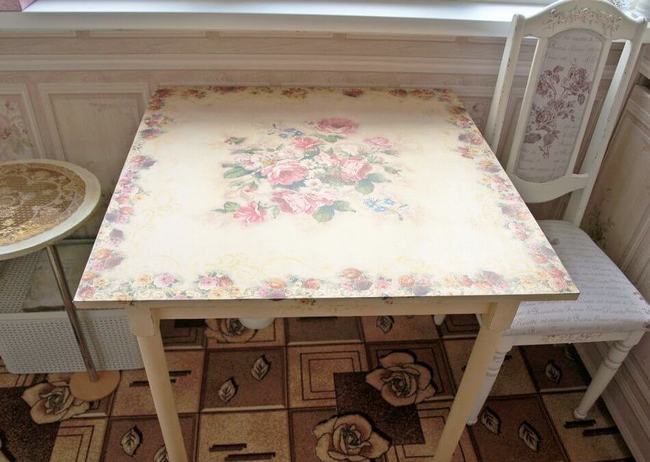
When using "branded" products and compositions for the artificial aging of furniture using the "craquelure" technique, the following rules must be observed:
- when buying varnish, you need to shake the bottle, checking the transparency, uniformity of consistency and density of the composition;
- to prevent the formation of bubbles on the treated surface and in the varnish layer, the vial with the working composition must not be shaken before use;
- restoration work should be carried out in a ventilated room where wet cleaning is performed;
- when using single-component compositions, the direction of the cracks will coincide with the direction of movement of the brush;
- when using contrasting acrylic dyes, a particularly decorative effect is obtained when choosing paints of light-dark or pale-saturated shades.
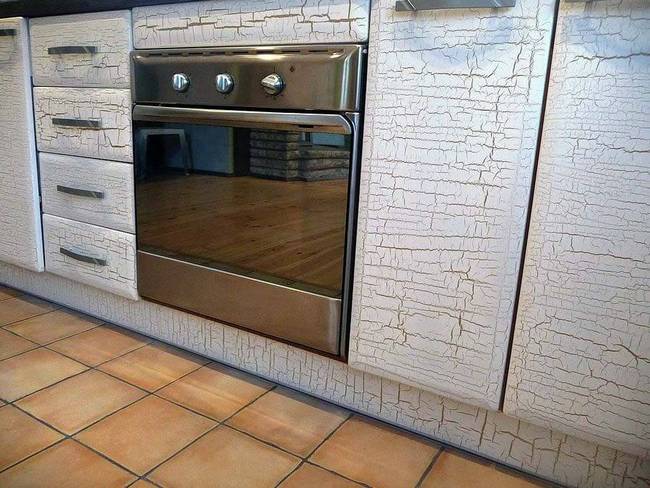
Using improvised means in the crackle technique
If there are no branded compositions at hand to create an antique grid, then you can use the tools at hand that any housewife or zealous home craftsman has in their arsenal. Most often, when forming cracks, they use:
- stationery or repair and construction polyvinyl acetate glue;
- various types of furniture varnishes;
- from food products, you can choose vinegar essence, gelatin or raw egg white.
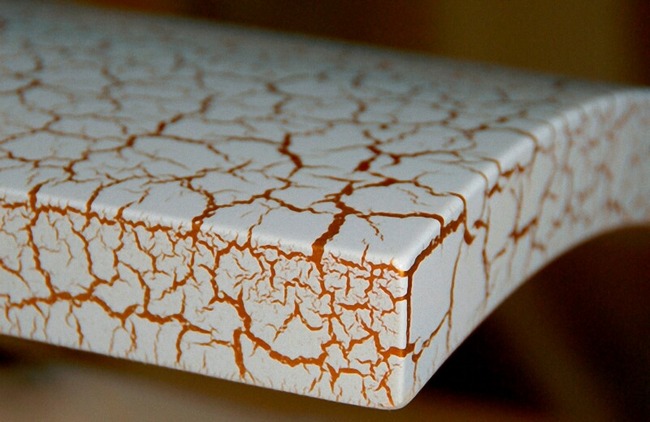
It is also worth exploring some additional recommendations:
- When using a polyvinyl acetate emulsion (PVA glue), it is applied in a thick layer on the surface to be decorated and slightly dried. When the adhesive layer acquires a sticky consistency, water-based acrylic paint is applied over it, and after it has reacted with the adhesive and the crack texture has appeared, the product is dried with a household or building hair dryer.
- For home "aging" you can use pentaphthalic varnish "PF 283", which is applied to the product and pre-dried naturally for four hours until a slightly sticky film is formed. After that, the varnish coating is opened with a layer of acrylic paint and dried until a mesh texture appears. The product is then dried naturally.
- Egg white is applied over a double applied layer of acrylic paint. After the protein has dried without the use of a hair dryer, a contrasting (with respect to the base) acrylic paint is applied to it.
- The crackle technique using gelatin is similar. Its advantage is the possibility of forming grid lines, the width of which directly depends on the thickness of the gelatin layer.
- A nine percent solution of vinegar essence is applied with a sponge to a dried acrylic-based dye. The grid in the form of cracks appears almost immediately.

Conclusion
Novice restorers should be aware that the first attempts may be unsuccessful, since in the technique of artificial aging "craquelure" work experience and the skills gained in this process are very important, which can replace any "branded" tools and kits.
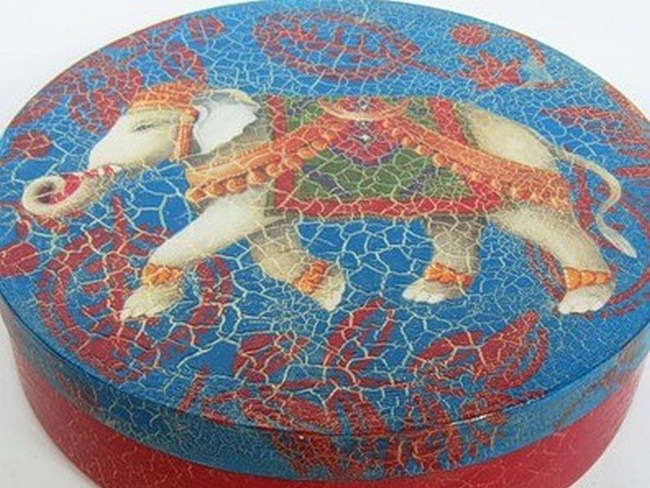
Video
The video provides detailed instructions for applying craquelure varnish.
What else to read
THE LAST NOTES
- DIY rocking chair (59 photos): drawings, convenient options, tips for creating
- Cover for a chair with a backrest with your own hands - patterns plus fantasy
- DIY rocking chair: materials and drawings with dimensions
- Do-it-yourself bumpers in the crib: a manifestation of parental love and care
- An excellent design solution to make a built-in wardrobe from hl
